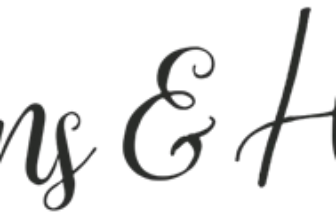
The Camping Mattress: Interesting Alternatives to the Air Mattress
[ad_1]
Your camping mattress can often make or break a fun camping trip and turn it from a good time to an ordeal where sleep is at a premium. Despite this, not a lot of thought is often put into the camping mattress until after a bad experience or two. Usually the first camping mattress people opt for is an air mattress, these are the most popular, and are a good choice as long as you don’t buy the cheap kind. One of the main issues with an air mattress, however, is air leakage. This is something that will happen sooner or later, but there are alternatives.
The foam mattress is one of your best alternatives to the air mattress. It’s all-purpose, portable and durable. It may be little bulkier and heavier, but it’s a fair trade for the durability gained. There are two kinds of foam mattresses, closed cell and open cell. The closed cell mattress is made of a harder, usually, waterproof foam. The open cell foam is softer, covered with a protective material and requires some air to inflate through the open cell structure. The good news is these mattresses are self inflating.
Here are some of the pros and cons of the foam camping mattress:
Open cell foam:
Pros:
- It’s very lightweight, although heavier than an air mattress.
- It’s very portable and can be compacted to a small size. Some models are comparable to an air mattress.
- It provides good insulation from the ground.
- The open celled foam mattress self inflates, saving you the time and effort of doing it yourself.
Cons:
- These mattresses still require air, so they can still be punctured, although repair kits are available.
- They can be expensive.
Some good examples of open celled foam mattresses are the Therm-a-Rest NeoAir XLite and the Therm-a-Rest luxury map.
Closed cell foam:
Pros:
- Multipurpose; closed cell foam can be used as seat to rest on or in some cases, as a water float (I personally use a foam pool float).
- Portable; these are usually heavier and bulkier than air mattresses or open celled mattresses but still surprisingly light and portable as these can be folded, rolled or otherwise compacted for transportation.
- It’s durable, that means no air leaks and no ending up on the ground in the middle of the night. The closed cell foam mattress is a good choice for rocky surfaces or areas where an air mattress or open celled mattress could get punctured.
Cons:
- Heavier and bulkier than air or closed cell mattresses
- May not provide a lot of padding (more padding equals more bulk).
Other alternatives include laying down a few blankets or comforters, bamboo mats and survival beds (I’ll explain this). I’ll go over the pros and cons of each:
Blankets/comforters:
Pros:
- It’s cheap, because you already own these, you don’t have to buy anything new.
- This is a very flexible method as you can play with the thickness of the padding under you or over you.
- Durable as the blankets can conform to any surface without being punctured, although they can tear, but even with a tear they are still useable
Cons:
- Very heavy and bulky, definitely not for hiking.
- Not very compact, will not fit in a pack well.
- May not provide a lot of padding (as mentioned before, more padding equals more bulk).
Bamboo mat: The bamboo mat is a lightweight portable alternative to an air mattress, however its application is limited to warmer climates.
Pros:
- It’s cheap.
- It’s lightweight.
- It’s compact.
- It’s durable.
- It’s multipurpose, you can use it to sit on, eat on, lay on, possibly more.
Cons:
- Although, it’s durable, it can break with enough force.
- Provides very little protection from the ground in terms of insulation.
- May not be very comfortable if the ground is rough.
Survival beds: Survival beds are made from materials you find in your environment. The idea is to get you off the ground and provide you cushion and insulation. For examples they could be as simple as piling up leaves or pine boughs. Another step up would be laying out logs and then piling bedding like those mentioned above on top of the logs. Or they could be more involved and require some lashing, cutting and assembly.
Pros:
- These types of beds are free.
- You can consider these weightless as far as hiking is concerned, because they are made on the spot and left behind when you leave.
- Nothing to carry, except maybe a knife.
- No need to worry about durability, because you aren’t keeping it.
- Can be very comfortable and warm if done right.
Cons:
- Takes more time and energy than other types of bedding.
- If done wrong, these may offer no protection from the ground.
As you can see, there are several alternatives to the air mattress. Some are good for hiking, some are not. Again, I’m not knocking air mattresses, they make great camping mattresses, and sometimes these are the ideal solution. Light weight, soft and insulated. And if you buy a quality mattress, you won’t have to worry so much about leaks, which can be patched any way. The air mattress is a good all-purpose camping mattress, but it’s good to have alternatives.
[ad_2]
Source by Michael Roberts, D.C.



